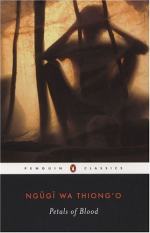|
This section contains 401 words (approx. 2 pages at 400 words per page) |

|
1930: Few Kenyans are given opportunities to study in the English colonial schools. Those who do are forced to accept a curriculum heavy on European classics and short on African traditions or texts.
1963: The newly independent Kenyan government responds to popular demand by building many new schools, including some in remote areas. Private citizens also found schools to meet the demand.
1969: Students at Nairobi University protest in opposition to the western bias in the educational curriculum.
Today: There are three national universities in Kenya. While schooling is not compulsory, eighty percent of children receive at least an elementary- level education. Works by African authors and scholars are featured in the curriculum.
Today: Education is compulsory up to age sixteen for children in the United States. Schools respond to a growing demand for a multicultural curriculum to reflect the diversity of the population.
1900: European settlers control...
|
This section contains 401 words (approx. 2 pages at 400 words per page) |

|




